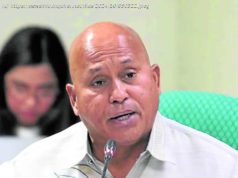Top robotics expert on Uber crash questions whether sensors worked
SAN FRANCISCO — One of the country’s top self-driving car experts says that a recently released dashcam video suggests a failure of technology is at issue in the fatal Uber self-driving car incident that killed an Arizona woman.
“The car’s LiDAR (light ranging and detection laser system) should have picked the pedestrian up far before it hit her,” says Raj Rajkumar, who leads the autonomous vehicle research team at Carnegie Mellon University.
“Clearly there’s a problem, because the radar also should have picked her up throughout, she was moving,” he says. “Maybe it’s the sensors not working correctly or the hardware that processes it, or the software.”
Self-driving cars detect their surroundings with cameras, radar and LiDAR. Rajkumar says that while the car’s cameras appear to be of little value in the dark, its radar and LiDAR did not behave as designed.
The dashboard video released Wednesday shows a somewhat distracted safety driver, Rafaela Vasquez, 44, looking down as her car travels in a straight line along a Tempe thoroughfare at around 40 mph when it suddenly hits Elaine Herzberg, 49, who was crossing with a bicycle away from a crosswalk.
More: A trucker asleep in the cab? Self-driving trucks could make that happen; some say, no way
More: Video shows Uber operator moments before self-driving car crash that killed pedestrian
“This type of scenario is exactly what AVs (autonomous vehicles) are built to handle, seeing an obstacle far ahead and if necessary stopping,” he says. “All groups working in this space likely are having intensive meetings now, trying to find out what happened with the Uber system, and if they may have the same issue.”
Rajkumar, who also serves as co-director of the General Motors-Carnegie Mellon Vehicular Information Technology Collaborative Research Lab, notes that most LiDAR systems, which sit atop a car roof and scan the horizon for objects, have a blind spot of around 30 feet immediately surrounding the vehicle.
But the car should have detected the victim well before she was within that range, he says.
Uber declined to comment on Rajkumar’s observations and referred questions to the National Transportation Safety Board, which is investigating the incident along with Tempe police. The NTSB also declined comment.
Uber expressed regret over the death, and is cooperating with authorities in the ongoing investigation. Tempe police called the incident “unavoidable” based on its review of the dashboard video.
The Bay Area-based company immediately halted its self-driving car testing across a variety of cities. Two other companies have since paused their on-road autonomous operations — Toyota and NuTonomy — but many others have remained mum on their plans.
Rajkumar’s Pittsburgh-based school, CMU, has graduated top self-driving engineers including former Google car lead and Aurora founder Chris Urmson. Four of the senior leaders at Argo.ai, which Ford brought in-house at a cost of $1 billion, have ties to CMU. And when Uber first started its self-driving program in 2015, then-CEO Travis Kalanick raided CMU for dozens of its staffers.
Rajkumar’s assessment squares with the basic principles inherent in self-driving car design, whereby sensors feed situational data to software that tells an autonomous car how to react.
During past rides in Waymo’s self-driving cars, the new name of Google’s autonomous company, USA TODAY observed via an engineer’s laptop how LiDAR tracked pedestrians, cyclists, animals and other cars — often well beyond line of sight — representing each with a geometric shape. For example, when a pedestrian was detected in a crosswalk, the car slowed.
In the Arizona incident, although an Uber employee sat behind the wheel as a safety operator, the vehicle was in autonomous mode, police say.
Uber recently settled a lawsuit over LiDAR technology with rival Waymo, which charged that Uber developed its LiDAR with trade secrets it obtained after buying self-driving truck company Otto which was started by former Google car employee Anthony Levandowski.
Uber consistently maintained it never used secrets for its LiDAR, and although the settlement required Uber to grant Waymo $245 million in equity it did not admit any guilt.
Herzberg is believed to be the first pedestrian killed by a self-driving. But it remains to be seen if the accident puts a dent in what has been a feverish race to develop fully autonomous vehicles.
More: Uber touts corporate policy to offer felons a second chance
More: Toyota, NuTonomy halt self-driving programs as Uber fatality ripples across autonomous car landscape
Ride-hailing companies such as Uber and Lyft been particularly keen to do so because eliminating the costly driver would radically improve their business models.
Proponents of self-driving cars say sophisticated sensors will be better at avoiding accidents, which could drastically reduce the nation’s 40,000 annual traffic deaths.
But critics have long cautioned that self-driving tech remains in its infancy and is not ready for testing among the general population, a cry that is bound to echo following the death in Arizona.
“This incident reminds people who think tech is a panacea that that’s just not true,” says Karl Bauer, executive publisher of Cox Automotive.
Brauer notes that when ABS, or anti-lock brakes, first appeared on the market, a combination of rudimentary tech and user error led to many accidents, as drivers pumped their brakes in order not to lock up their wheels, which confused the system.
“For that matter, airbags, which do save a lot of people, also continue to kill a lot of people,” he says. “Technology can reduce (fatalities), but it’s never going to just eliminate them. And no amount of tech will bend the laws of physics.”
To date, 32 states have passed measures that welcome self-driving cars, according to the National Conference of State Legislators. That figure stands as a testament to how states don’t want to be left behind in a race toward a new mobility paradigm that could entice companies and grow jobs.
Currently, companies are testing in about a half-dozen states, notably California, Arizona and Michigan.






